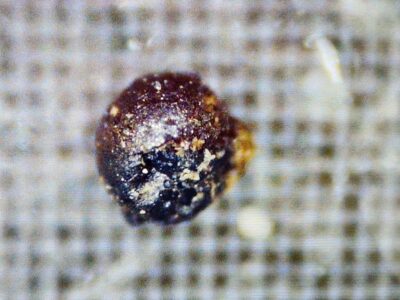At the heart of any research endeavor is the quality and capacity of the facility that supports data generation and facilitates scientific understanding.

With this in mind, in June 2004, Gary C. Comer, founder of Lands’ End and friend of Lamont-Doherty Earth Observatory geochemist Wallace Broecker, offered to help construct what is now known as the Gary C. Comer Geochemistry Building.
In late 2013, Comer’s dream of creating a uniquely powerful facility for the Lamont-Doherty Geochemistry Division became a reality upon completion of the Comer Building’s Ultra Clean Laboratory. On the afternoon of November 20th, the Ultra Clean Laboratory was dedicated in front of an audience of Observatory Advisory Board members, donors, scientists and other members of the extended Lamont-Doherty and Columbia University communities.
“No other science discipline can boast the leadership in the geochemical field that belongs at Lamont,” said Michael Purdy, Columbia University’s Executive Vice President for Research, and former director of Lamont-Doherty, in remarks during the dedication.
In addition to the support from Gary C. Comer, construction of the Comer Building and Ultra Clean Laboratory was made possible by a grant from the National Institute for Science and Technology (NIST) through the American Recovery and Reinvestment Act of 2009, in response to a proposal submitted by Observatory scientists requesting funding for a state-of-the-art facility. Members of Lamont-Doherty’s Advisory Board and many private donors also enabled completion of the lab.
Lamont-Doherty geochemist Conny Class, who leads the Ultra Clean Lab with colleague Steve Goldstein, said that thanks to the generosity of NIST and Lamont-Doherty’s friends and alumni, Observatory scientists and students now have access to a unique facility in which to explore our planet. “The Ultra Clean Laboratory facilitates the sort of advanced analyses that enable Lamont-Doherty scientists and students to investigate every aspect of Earth, including the circulation of the oceans and atmosphere, changing ecosystems and solid earth processes,” said Class.

Class explained that the phrase “ultra clean” refers not to the state of the laboratory, but the ability to maintain levels of uncontaminated air within it. This enables scientists to analyze samples as small as ancient particles of dust frozen in cores of ice without fearing that the sample will be spoiled by bits of modern dust and dirt in the air.
Completion of the Ultra Clean Lab is an example of the strength of partnerships between federal agencies, the private sector and research universities in addressing the wide range of difficult scientific questions about Earth’s climate, from the complex dynamics of earth’s interior to how rising levels of carbon dioxide in the atmosphere will impact humankind. The lab allows Lamont-Doherty researchers to continue the Observatory’s long legacy of cutting-edge climate science and discoveries that reveal vital new information about our planet.



